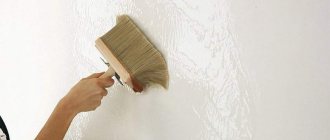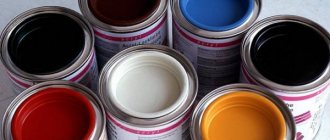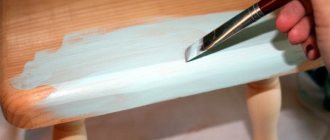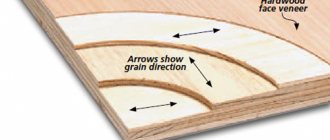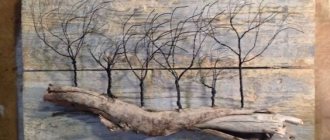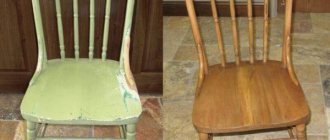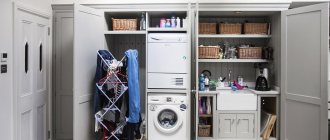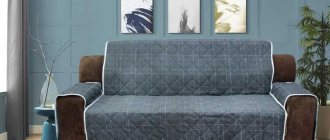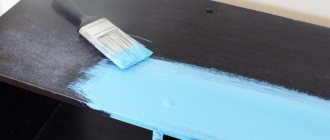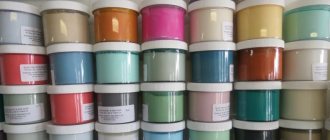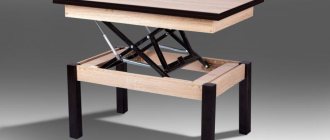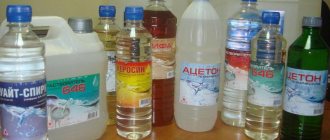Acrylic mixtures are actively used in painting, construction and design. To have an idea of when you can use a painted object, apply a second coat of dye, or varnish the surface, you need to know the drying time of acrylic paint. If the layer is not completely dry and it is covered with a protective layer prematurely, then it will quickly crack.
Features of acrylic paint
Acrylic-based paint is water-soluble, but after it dries and all the water has evaporated, a film coating is formed that is reliable and durable. Before drying the composition, you can add pigments to obtain the desired shade.
Water is used for dilution if the composition is too thick. When the layer dries, it can be washed, withstands abrasion, creating a durable layer. Does not emit an unpleasant odor and does not contain toxic elements.
These properties make it possible to use it for artistic work, including drawing by children. The products are suitable for different substrates: glass, paper, cardboard, metal, wood, plastic and others. But not all types of plastic can be painted with the composition.
Water is used for dilution if the composition is too thick.
Airflow speed
If all the windows and doors in a room are closed, there is no movement of air masses in it. Therefore, all fumes from the paint collect in a cloud above the surface. And this already means an increase in humidity. What happens in this case has already been described.
Creation of forced ventilation Source pixel-shot.com
It is necessary to establish good air circulation in the room. So that any moisture that comes out of the paint is immediately blown away. It should be noted that in any well-ventilated room the humidity drops significantly.
What factors affect drying time?
How long acrylic paint takes to dry will depend on the rate of evaporation of the liquid, which can be influenced by different conditions. The following factors stand out:
- Temperature indicators;
- Humidity level;
- Air speed;
- Atmospheric pressure;
- Features of the material being painted;
- What thickness is the layer applied?
How long acrylic paint takes to dry will depend on the rate of evaporation of the liquid, which can be influenced by different conditions.
Temperature
The best option for drying a layer of paint would be a range from +18 to 24 degrees. The process slows down significantly at +10 degrees; if the temperature drops to zero, then drying does not occur, but a stage of transition to an icy state begins, and the film coating is destroyed.
When the temperature is high, above the extreme threshold, the lower layers of the material do not complete drying, but the upper ones are already completely dry. As a result, the undried layer breaks the coating due to moisture, and cracks form on the surface.
The best option for drying a layer of paint would be a range from +18 to 24 degrees.
Air humidity
When the humidity in the room is low, the drying time increases. Conversely, if the humidity is high, for example in the bathroom, the process will take longer.
When the humidity in the room is low, the drying time increases.
Airflow speed
When paint is applied to the surface, the air in this part becomes more humid, due to the fact that the process of evaporation of moisture from the composition starts. Accordingly, this factor slows down drying. To increase the drying rate, you can accelerate the air by increasing the air flow rate.
To increase the drying rate, you can accelerate the air by increasing the air flow rate.
Atmosphere pressure
There is only one principle of influence here: the higher the pressure, the faster the drying speed. From the pressure, liquid particles seem to be pushed out of the surface.
There is only one principle of influence here: the higher the pressure, the faster the drying speed.
Base surface
The drying speed depends on the type of material that will be painted. After all, some materials absorb liquids well, while others do not have this property. For example, wooden floors. So on plaster, fabric, plasterboard sheets, paper sheets, drying will be completed more quickly than on a metal, plastic or glass surface.
The drying speed depends on the type of material that will be painted.
Paint layer thickness
You can dry the paint faster if you make the application layer thinner. More liquid paint will be applied thinner; for this you can add water or thinner, but it is important not to overdo it so as not to lose the properties of the paint.
You can dry the paint faster if you make the application layer thinner.
Flaws
Many buyers are confused about the names of the paint and may use it in the wrong place. Most often this happens when an interior or decorative type of palette is used on the street, instead of a façade one. But only the latter is capable of withstanding sub-zero temperatures. While the first two are intended only for internal use.
But although facade paint can withstand the negative effects of heat, cold, rain, snow and wind, experts recommend additionally opening the coating with varnish. Or other transparent fixatives. They will significantly extend the service life of the main composition.
Super-resistant acrylic paint for exterior use Source fejerverk-krasok.ru
Acrylic paint for interior work Source fejerverk-krasok.ru
The next two minuses are from the category of those that tend to go from positive to negative. For example, the fast drying time of acrylic paint turns into a real disaster for some. People do not have time to complete the work and this affects the final quality.
True, only those who deal with acrylic paint for the first time face such a problem. Well, or those who like to do any work slowly and deliberately. In this case, special additives are provided that significantly slow down the drying of the composition. And they are offered to buy along with the base.
Brushes often suffer due to this problem. If they are not put in order immediately after work (washed thoroughly), they quickly dry out. After this, the tool becomes completely unusable and all that remains is to throw it away. The same disadvantage applies to paint removal.
Brushes washed from paint Source inhomeplans.com
Acrylic paint drying stages
Many factors influence how long paint takes to dry, as mentioned earlier. But at the same time, the process itself includes several stages, and then the required level of strength and reliability of adhesion to the base is achieved so that the result lasts a long time. Knowing the stages of drying will help you understand how it can be influenced and what not to do in order to get a quality result.
Knowing the stages of drying will help you understand how it can be influenced and what not to do in order to get a quality result.
Stage 1: Wet paint - start pouring
When acrylic is in its most liquid state, and is only applied to the base. Then the process of evaporation of the liquid begins, contact with air occurs, water and diluent come out. If liquid types are used, this stage may take several days.
When acrylic is in its most liquid state, and is only applied to the base.
Stage 2: Film Formation – 8 hours
When some of the volatile substances begin to be removed from the layer, a film coating begins to form on the surface. In areas where the layer turned out to be thin, the film coating will appear faster, where the paint was applied thickly, the stage can last up to eight hours.
When some of the volatile substances begin to be removed from the layer, a film coating begins to form on the surface.
Stage 3: Dry to touch - 24 hours
The transition to this stage indicates that touching with your hand will not leave a visible mark on the surface. The sticky property of the layer disappears; usually you wait a day to get a similar result.
The transition to this stage indicates that touching with your hand will not leave a visible mark on the surface.
Stage 4: Solid State - 48 hours
In this case, visually, it seems that drying is completely completed. And it is allowed to apply new layers of paint or other finishing materials such as varnishes. But if you do this prematurely, then due to the under-dried bottom layer, the composition may peel off, or the new layer will be smeared on the undried parts.
For this reason, it is recommended to wait 2 days to accurately apply the materials to the dried base.
It is recommended to wait 2 days to accurately apply the materials to the dried base.
Stage 5: Full cure - from 72 hours
This is the final stage of curing of the acrylic layer. Liquid elements from the layer evaporate, and the film becomes durable. The necessary properties for which acrylic paint is valued are acquired.
It will be possible to apply new layers of finishing materials; this will take up to three days. However, minor volatile elements in the paint may still take some time to evaporate.
It will be possible to apply new layers of finishing materials; this will take up to three days.
Examples of using
Acrylic is used everywhere. It adheres well to any surface, with the exception of a few types of plastic. Moreover, the composition is applied to the plane in various ways. From brush and roller to spray can and spray.
The composition can be used in any living space, even a children's room. Since dried paint is not afraid of water, it is excellent for bathrooms and bathrooms. An interior or decorative look is chosen for these purposes.
Painting walls using a roller Source brilias.com
Paint the door with acrylic spray paint Source kraski-net.ru
But the façade palette is also widely used. It helps protect concrete and metal structures outdoors from the elements. This is especially important if there are parts that are susceptible to corrosion. The use of the composition on wood protects it from pests and moisture.
If the house has floors with a concrete or wooden surface, then the composition should be applied in at least two layers. First the surface is primed and then painted. And you don't have to worry about how long it takes for floor paint to dry. In most cases, the work can be completed the next day.
Since a special wear-resistant composition is produced for the floor, the surface will last up to 10 years without repair. And the next day you can safely wash it with water. Moreover, you can paint not only in interior spaces. The mixture holds up well on outdoor areas. The truth loses its properties a little faster.
Painting curbs on the street with acrylic paint Source change.org
Another popular application is painting the bathroom. Moreover, not only the walls are often covered, but also the ceiling in the room. Moreover, the applied composition looks on the surface like a thin layer of plastic. And special components in the mixture do not allow mold to develop.
Acrylic paint drying time
Sometimes it is important to calculate how long the paint will take to dry. For example, when repairing a car, you need to know when the car will be available for driving. Enamel is often used for such cases. The smooth surface of the metal does not allow the layer to dry quickly, but the use of spray cans for application allows you to apply a thinner layer and reduce the drying time.
When repairing a car, you need to know when the car will be available for driving.
How long does it take for acrylic (art) primer to dry?
The primer is used to treat hard and flexible types of substrates; it helps to obtain a water-repellent base; the layer is rough, which creates a good base for further finishing. The degree of adhesion increases, material consumption decreases, and minor surface defects are eliminated.
Under normal operating conditions, drying takes from half an hour to two hours. But you can use a hair dryer to speed up the process. However, when working with a plastic, glass, or metal base, a hair dryer cannot be used; the smoothness of the surface can lead to a loss of soil adhesion quality.
Under normal operating conditions, drying takes from half an hour to two hours.
How long does it take to dry on plastic?
Plastic has poor adhesion; for this reason, shortening drying using a hairdryer is not recommended. The stage should occur under natural conditions without additional influences. This will allow the layer to dry completely in about 72 hours.
Plastic has poor adhesion; for this reason, shortening drying using a hairdryer is not recommended.
Prohibitions when washing a car after painting
In order for the operation of a new car paintwork to be long and problem-free, after painting you need to eliminate some actions and follow the advice of car experts:
- do not wash the car immediately after driving on a hot, sunny day, but first wait until the coating has cooled naturally;
- do not wash directly in the sun, work only in the shade;
- do not wash the car in the wind, do not allow debris or dust to get on the fresh paintwork, so as not to scratch it;
- do not place the car on gravel or sand surfaces, or place it on the grass while washing;
- do not use brushes, old sponges, other rough devices, as well as silicone or other scrapers to wash the body;
- do not use household detergents, especially powder ones;
- do not use cheap car shampoos of unknown brands, which can cause clouding of the paintwork;
- Do not use hard water for washing, which leaves white spots and stains - they will have to be scrubbed off, and this is harmful to the paint.
How to shorten the drying period
If the dyeing conditions recommended by the manufacturer are followed and the conditions are not changed during drying, then the best result will be obtained. The layer will last longer and be durable. But there are times when it is necessary to shorten the drying period of the paint in order to complete the work faster. Then you can resort to the following:
- Do not use water for dilution, but choose quick-drying products;
- The temperature in the room increases to +25;
- Good ventilation is created.
You can combine heating and ventilation using a hairdryer. If the area is small, then a household one is suitable; for large spaces, a construction one is used.
You can combine heating and ventilation using a hairdryer.
Humidity
The pattern here is clear. The more moisture in the air, the more significant the surface is moistened. And this prevents internal water from leaving the paint. And until the atmosphere in the room becomes drier, the evaporation process may drag on indefinitely.
High humidity in the room Source mrrestavrator.ru
Is it possible to dry acrylic paint with a hairdryer?
A similar option to reduce drying time is allowed, but you should not expose the artwork to hot air; cold ventilation is chosen. But since the acrylic composition does not require a long wait for drying, and usually takes no more than two hours, artists usually do not resort to such an effect. Sometimes, on the contrary, it is necessary to increase the setting time of the composition.
Since the acrylic composition does not require a long wait for drying, and usually takes no more than two hours, artists usually do not resort to such an effect.
Acrylic paint is a product that can be used on a variety of substrates. Different types of compounds are produced, which are distinguished by different properties. From artistic to construction, paint can be used for foam, wood, metal and other materials. The layer dries quickly, and it is possible to influence the process by decreasing or increasing the time. But it is better to leave the layer to dry naturally.
About the composition of hardeners
The most common catalyst reagents that trigger the polymerization mechanism are polyethylene polyamine (PEPA) and triethylene tetraamine (TETA). Both belong to the amine group of epoxy resin hardeners, but act slightly differently.
PEPA is usually classified as a “cold” reagent, which means that for normal hardening within a day, the catalyst is added to the main composition of the resin, kneaded and applied to some surfaces or cast as a volumetric product at normal room temperature, within 20 -25°C. Products or surfaces made of such resin can withstand temperatures up to 350-400°C degrees without compromising quality, and only after 450-500°C does the destruction of the hardened polymer begin.
When heating a mixture of epoxy resin with a polyethylene-polyamine hardener, the drying time of the working solution will decrease, but some of the performance qualities of the finished hardened surfaces or volumes may deteriorate. In particular, the tensile strength of fiberglass during its manufacture will decrease from 9.3-11.0 to lower values, or the breaking stress in bending in MPa instead of values 60-100 can become only 40, and in tension instead of 35-70 - only at 30.
Triethylenetetraamine behaves somewhat differently. Referring to the “hot” catalysts for the hardening of the epoxy composition, TETA’s operating temperatures during long-term operation are on average 100°C degrees higher than those of PEPA, the temperature of the onset of destruction when finished products overheat is 473-480°C, and the breaking bending stress MPa It stays in the range of 90-130, and for stretching – 70-98.
For TETA, some heating of the finished mixture is desirable, which will cause an acceleration of the solidification reaction. The closer the temperature of the mixture is to 50°C degrees, the higher the polymerization rate will be.
Therefore, if you need to make a volumetric casting from epoxy with TETA hardener, then it must be carried out in several stages, filling the volume in layers, and at the same time allowing each previous layer to completely harden. It’s troublesome, then use PEPA, whose self-heating coefficient is several times lower and you can fill a large volume at once.
Therefore, “hot” polymerization catalysts are more widely used in cases where future products will be subjected to significant loads and high temperatures. During the hardening process, the increased temperature of the epoxy mass with the hardener promotes the formation of a denser molecular network with extensive and branched valence bonds, which means strength, heat resistance, and greater resistance to stretching, bending, tearing and twisting.
Increasing the temperature of the epoxy-hardener mixture by 10°C degrees accelerates the hardening of such a mixture by 3 times.
Drying time varies depending on whether it is hot or cold
Above: We conducted a series of tests on a cold autumn day. First, various finishing compounds were applied to scrap oak boards in a warm workshop, and then in a cold garage. Eventually all the samples dried, but as the temperature dropped, drying took much longer. For example, it took three and a half times longer to dry oil-based polyurethane in a cold garage at 5°C than in a warm workshop at 21°C. The fastest drying coatings in both cases were shellac and nitro varnish in an aerosol can.
For the “how long it dries” test we used:
| Shellac | Nitrolac | Water based polyurethane | Oil varnish | Water based polyurethane | Nitrolac | Oil-based polyurethane |
| varnish | aerosol | |||||
| aerosol | brush application |
Bottom: To prevent dust particles from settling on wet and sticky surfaces, do not direct the air flow directly at the surface, but install a pair of small fans on either side of the product, blowing in opposite directions.
In preparing the article, materials from a very interesting publication for woodworkers and cabinetmakers, WoodMaster, were used
Spray painting a car
It is important to be patient when spray painting as each coat of paint will take longer to dry than when painting with a spray gun.
p, blockquote 13,0,0,0,0 —>
The minimum temperature for spray painting is + 10 degrees Celsius. The ideal temperature is approximately +20 degrees.
p, blockquote 14,0,0,0,0 —>
Before painting, you need to determine at what distance you will spray the paint.
p, blockquote 15,0,0,0,0 —>
Typically, the distance from the nozzle to the surface is 20–25 cm.
p, blockquote 16,0,0,0,0 —>
You must maintain the same distance at all times. The nozzle, when painting, must always be perpendicular to the surface.
p, blockquote 17,0,0,0,0 —>
p, blockquote 18,0,0,0,0 —>
When spraying, the droplets should merge and form a single layer. If during spraying the drops on the surface of the part lie separately from each other, then the distance is too large.
p, blockquote 19,0,0,0,0 —>
With the correct distance of the nozzle from the surface, the coating should be smooth, glossy, and without smudges. The paint in the can is generously diluted with solvent, and the total percentage of pigment in the total volume of the mixture is not high, so it has low coverage. Several thin coats are required to cover the repair area or a different color of paint.
p, blockquote 20,0,0,0,0 —>
Applying thin layers instead of one thick one will prevent streaks from forming.
p, blockquote 21,0,0,0,0 —>
Never apply the next coat until the previous one has dried. Even if there is no smudge, the overall paint layer will take longer to dry. The time required to dry between coats depends on humidity and air temperature, usually no more than 10–15 minutes. You can reduce this time, but then the overall layer will take much longer to dry.
p, blockquote 22,1,0,0,0 —>
You need to start spraying and stop spraying outside the part. Thus, an already formed torch will fall on the surface and no spots will form during the initial spraying. That is, you need to press and release the button with the nozzle outside the part.
p, blockquote 23,0,0,0,0 —>
You need to paint in rows that overlap each other by 50–75%. It is important to develop the speed of movement of the hand with the spray can. If you move too quickly, the paint will not have time to form an even layer. If you spray too slowly, a drip may form.
p, blockquote 24,0,0,0,0 —>
Let's consider the algorithm for painting with a high-quality aerosol can, which has a fairly wide spray pattern and high-quality paint with good covering ability.
p, blockquote 25,0,0,0,0 —>
The first layer should be thin. Such that the surface to be painted will be visible through it. It applies quickly. At this stage, the paint pigments will lie randomly on the surface, this is normal.
p, blockquote 26,0,0,0,0 —>
After the first layer has dried, subsequent layers should be applied more slowly. The nozzle can be brought a little closer to the surface. This will make the layer thicker. At this stage, it is necessary to block the paint passes by 50%.
Enameling bathtubs or liquid acrylic - which is better?
Factory enameling is the process of sintering the hot surface of a bath with a special powder, which results in a smooth, glossy coating.
It is clear that it is impossible to carry out work using such technologies at home. But to restore the surface of the bowl with your own hands does not require complex production technologies. To enamel a bathtub, you need to carefully prepare the bowl for this procedure:
- Using a grinder with a special attachment, the old layer of enamel is removed.
- Then the surface is sanded, treated with bath putty and degreased.
- Enameling is done with a brush or spray gun. Before this stage, the bath should be warmed up for better adhesion of the paint to the surface.
- The coating should be done in several layers: the final result of layering the paint should have a thickness of no more than 15 mm and no less than 5 mm.
The main advantage of the method is the ability to choose any color range. Enameling is also one of the cheapest ways to restore the surface of a bowl. This method has significantly more disadvantages:
- short service life of the enamel coating;
- loss of shine and yellowing of paint from the use of cleaning and detergent reagents (enamel care is permissible only with the use of a soap solution);
- the coating becomes hard, but also quite fragile, and this entails chips or cracks when hard objects fall;
- when the bath is filled with hot water, the metal expands, but the enamel remains motionless: this can lead to the occurrence of ruptures in the layers of the bowl’s coating;
- long drying time.
Stages of enameling a bathtub Glass coating (liquid acrylic) has clear advantages over enameling:
- absence of a sharp unpleasant odor during application;
- acrylic is flexible, plastic, susceptible to expansion when heated with hot water;
- short-term drying;
- easier method of application;
- longer service time.
The disadvantages of stacrylic coating include loss of gloss from the use of abrasive and chemical substances: just as in the case of enameling, liquid acrylic is sensitive to the effects of cleaning reagents and mechanical damage.
Precautionary measures
Regardless of the quality of construction paints, all of them can harm a person if the composition is used incorrectly or if the work technology is violated. The vapors of any dye are poisonous; individual substances included in their composition can provoke an allergic attack of varying strength, irritate the skin and even sometimes lead to burns.
Whenever possible, the room being painted should be ventilated to avoid excessive concentrations of hazardous substances. And even if the windows are regularly opened, wearing a respirator or at least a gauze bandage is completely justified.
Cold air make it move
One way to speed up the drying of a coating in a cold workshop is to create an air flow. On a hot day, currents of warm air move upward on their own, and cooler air mixes them at the surface of the product. But in cold weather, the air is almost still, and drying slows down, since there is almost no change in air at the surface.
By creating even a slight air flow, you can ensure regular replacement of air at the surface, which will carry away more thinner or solvent vapors. At the same time, it will constantly blow the surface with oxygen, necessary for chemical polymerization in reactive compositions. Create a steady air flow in the workshop, but do not point fans directly at the product as shown in the illustration.
Review of popular manufacturers
The most famous brands of floor coverings include:
- V.G.T. Easy to use and do not have an unpleasant aroma;
- Lakra. Distributed in liquid form. Small selection of colors and shades;
- Tex. The odorless substance used for most materials from which the floor is made takes a long time to dry, but is sold at an affordable price;
- Prestige. Large selection of colors, while the price is affordable for everyone.
The quick-drying, odorless paint can be used on any subfloor. It includes boards, slabs of wood chips and concrete. Such coloring compositions are varied in the components they contain, have a variety of colors, but they are all non-toxic and environmentally friendly.
Quick-drying paint occupies a large niche in the building materials market. She is in demand and in great demand. The sale of dyes of this type prevails over other materials intended for flooring, although their cost is higher. This is explained by the fact that when applied, the time for the entire cycle of finishing work is significantly reduced, and most of them are based on natural components.
How to work with finishing compounds and store them all year round
- If your workshop is not heated, move all jars of finishing compounds (especially water-based ones) to a warm room in the fall, and return them to the workshop in the spring.
- Do not store cans of finishing compounds and glue on a cold concrete floor in the basement.
- To warm the finishing compound to room temperature, place the jar in hot water (photo below) or place it next to a radiator for a few minutes. Do not heat the compound above the temperature of the wood you are going to apply it to. Do not use open flame for heating.
- After applying the composition, maintain a stable temperature in the room until the coating dries completely.
- If an air heating system is installed in the workshop, in order to save money, you should not turn on the circulation of warm air inside the room. It is necessary to ensure the flow of fresh air from the street, heating it to room temperature.
- Use a dehumidifier if your workshop is located in a damp basement.
- Do not apply another coat of coating unless the previous one is completely dry.
- Choose the best time to finish. As a rule, air temperature and humidity are lower in the morning. Never try to speed up drying by exposing the product to a sunlit area.
Reference by topic: How to apply varnish with a spray gun on a door
Types of floor enamels and technical characteristics
Enamel contains various substances, including varnishes and color pigments. These components determine on what basis the coating will be produced, organic or water-based. Paintwork materials also differ in structure:
- Hammer;
- Primer;
- Acrylic;
- Polyurethane;
- Alkyd.
Let's look at the main types of floor paints used when painting flooring.
Alkyd
Alkyd enamel used for flooring is very durable and protects well from moisture and ultraviolet rays. Based on resins and vegetable oils. Divided into 2 types of coatings:
Alkyd-urethane
Alkyd-urethane floor enamel is used to coat wooden surfaces, as well as chipboard and fiberboard. This paint protects the floor well from mechanical damage and does not wear off when exposed to detergents; it is a quick-drying composition.
The coloring agent is purchased ready-made; you just need to mix it. Application occurs using a brush, roller or spray.
Important! The substance burns well, and when painting you should protect the surface of your hands from the effects of enamel, since it contains harmful chemical compounds.
Urethane-alkyd enamel dries in about 24 hours, but if the layer is thick, then this period can increase significantly. If the paint is very thick, you can thin it with white spirit.
Polyurethane
Polyurethane floor enamel is usually used for painting surfaces made of concrete, after pre-mixing the components. Excellent properties allow the use of paints and varnishes for both interior and exterior work. The positive qualities of this material include:
- Tolerates moisture and sunlight well;
- Has an environmentally friendly composition;
- Protects from physical and mechanical damage;
- Formation of a smooth surface;
- Economical consumption.
The only disadvantage of polyurethane enamel is the long drying time, at least two weeks.
Acrylic
Floor enamel with an acrylic base is used for application to the floor in a semi-gloss form, providing an elastic film that prevents the coating from abrading. This type of paint can be used to paint both wooden and concrete surfaces of the room. The advantages when choosing a paint composition include:
- No odor or harmful compounds;
- Quick drying;
- Resistance to liquids;
- Does not transmit ultraviolet radiation;
- Has high strength.
Expert opinions
A large range of dispersion acrylic enamels are resistant to moisture and resistant to fading. They contribute to the formation of a protective top layer on the floor surface, ensuring a long service life, and are therefore recommended for high-traffic areas.
Oil-based or wax-based compounds will not penetrate into wood, such as parquet flooring , as required by wear conditions.
This will not happen if the boards are coated with acrylic or polyurethane enamel based on organic solvents. Their cost is higher than oil paints, but the costs will be justified by the quality. The price range of modern rapid-hardening compositions ranges from 35 to 1,500 rubles per liter.
Video: tips for choosing odorless paint
There is a huge amount of modern materials on the construction market. It is difficult for inexperienced people to understand their properties without having the necessary information. If the choice of paint is limited only to the floor covering, then you should be interested in those compositions that are recommended for interior work and have universal properties. Next, you should decide on the material for which it will be used. The chemical composition of the subfloor determines its reaction to paint. For a veranda made of boards or cement, it will differ in that it must be resistant to moisture and ultraviolet radiation. In addition, other requirements are imposed on it. It must withstand frost and heat. If this is not taken into account, the paint will begin to crack and move away from the surface of the veranda floor.
Particular attention should be paid to preparing the base. To do this, apply primer to the sanded surface. It will create the necessary adhesion of the paint to the base. It is applied before finishing work begins. The use of primers will save on paint consumption for the first layer. In addition, they have special concentrated additives that protect the wood from fungus and damage by insects, and also level the surface, filling microcracks in it.
Approximate prices
Tikkuril acrylic paint has the following containers:
- 1.25 l costs 47.60 rubles.
- 0.9 l – 35 rub.
- 2.7 – 135 rub.
- Betolux Aqua semi-gloss with a capacity of 2.7 liters has a price of 91 rubles.
- “Belinka Aqua Email - antistatic Alicor enamel in 20 liter metal containers is sold at a price of 475 rubles/kg.
- Dulux Domus BW - 2.5 l costing 1,456 rubles.
- Polyurethane paint from RUB 335. per liter
- Latex rubber paint from 52 RUR/m2
Material characteristics
If the density exceeds the norm, each type of paint can be made thinner. A thinner is used for this. Before purchasing it, you must read the instructions on the paint packaging. If this is not done, its structure will collapse and its technical characteristics will change. Large companies, such as Tikkurila, Eurostil LLC, Belinka Belles and the like, produce special solvent compositions for their paints.
This indicator is influenced by the following factors:
- Room or ambient temperature if work is carried out outdoors.
- High humidity, which prevents rapid evaporation of the solvent.
- The material from which the floor is made.
- The quality of the previous preparation of the base, including the material from which it is made, and the compliance of the composition of the soil mixture with the chemical one.
Tips and tricks for choosing floor enamel
When choosing enamel for floor work, it is recommended to contact a consultant at the hardware store where you plan to purchase the paint, who will recommend the ideal enamel option, depending on the floor material and coating characteristics.
If the drying time of the enamel is long, this does not mean that the paint material is of poor quality; on the contrary, most often the repaired surface lasts a long time without losing its color shade. But quick-drying paints are still considered more popular; you should pay attention to reviews of this coating and buy it at trusted large construction retail outlets.
Selection of enamel in accordance with the floor material
According to the description and properties, enamel compositions are very well suited for protecting surfaces from harmful effects and damage. But the material from which the flooring is made must correspond to a certain type of paint:
- Enamel for wooden floors. The base coating is most often chosen to be oil, acrylic, or alkyd. Before painting, the surface should be leveled and a primer applied. By following the process technology, such paints will protect the wood and update the interior, and without large financial investments. When using an oil base, it is worth noting that this paint takes a long time to dry and the enamel has an unpleasant odor, therefore it is suitable for open rooms where air circulates well.
Important! This paint will last a long time, the minimum service life is about 5 years.
Dyes using acrylic will give the natural material gloss and protect against fungus and mold. Such paints have a very diverse range of colors and do not fade in the sun for a long time.
- Concrete floors. This is a durable artificial material, but even it is susceptible to cracking, damage, abrasion and the negative effects of moisture. Acrylic or epoxy paint is applied to such a surface. 2-3 layers of enamel are usually applied to a concrete floor, so its consumption will be high, which will entail additional costs.
Preparing for coloring
First of all, the bathtub needs to be prepared for painting - thoroughly cleaned and degreased (use any acid-based degreaser only), and dry.
To improve the durability of your bathroom paint, you need to take care of the plasticity of the coating, which will provide a smooth surface without cracking or deformation. For abrasive processing it is better to use sandpaper No. 1.
High-quality cleaning can be achieved using cleaning products:
- pemolux;
- oxalic acid, etc.
Cleaning products are moistened with water to obtain a liquid mass similar to gruel and distributed over the entire surface. Leave for 10-15 minutes and then wash off with plenty of water. To better rinse off the detergent, run a full bath of water and drain after 15 minutes. All cleaning using acid should be carried out in protective clothing, and if you use oxalic acid, also with a respirator.
You can do the restoration yourself
